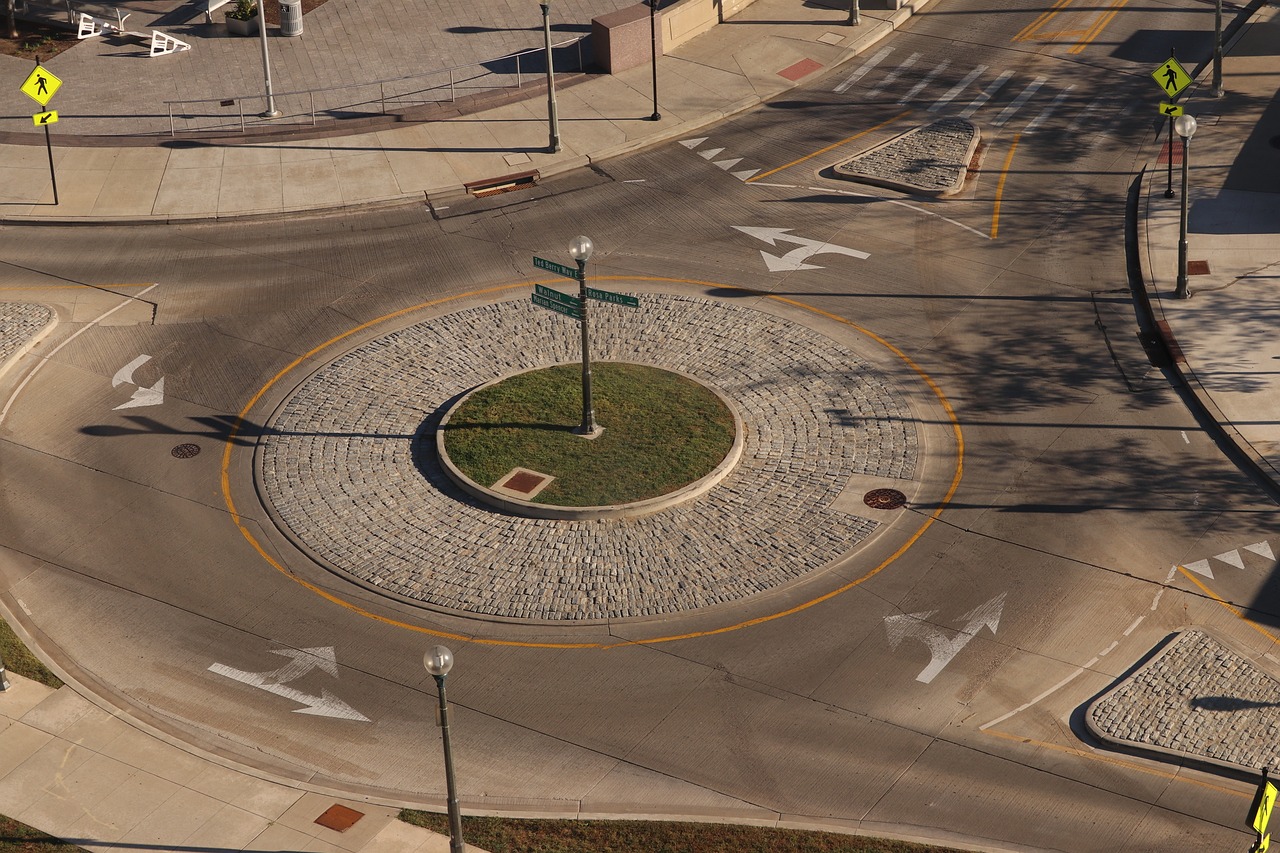Share this article with your network of friends!
Roundabouts, also known as traffic circles or rotaries, have become increasingly common on roads and highways worldwide. These circular intersections offer an efficient and safer alternative to traditional stop sign or traffic signal-controlled intersections. However, for seniors who may have learned to drive in a different era, roundabouts can be unfamiliar and potentially intimidating. In this article, we will provide a comprehensive guide for seniors on understanding and navigating roundabouts safely and confidently.
- Understanding the Purpose and Benefits of Roundabouts: Roundabouts are designed to improve traffic flow, reduce congestion, and enhance overall safety. Unlike traditional intersections, roundabouts require vehicles to yield instead of coming to a complete stop, allowing for a more continuous flow of traffic. The circular design eliminates the need for left turns across opposing lanes, reducing the risk of high-speed and T-bone collisions.
- Approaching a Roundabout:
- When approaching a roundabout, follow these steps:
- Observe and Read Signs: Pay attention to the road signs well in advance to determine the upcoming roundabout and its lane designations.
- Slow Down: Begin to reduce your speed as you approach the roundabout, but do not stop unless there is approaching traffic that has the right of way.
- Yield to Traffic: Yield to vehicles already in the roundabout. Vehicles within the roundabout have the right of way.
- When approaching a roundabout, follow these steps:
- Choosing the Correct Lane: Most roundabouts have multiple lanes, so it’s crucial to choose the appropriate lane based on your desired exit:
- Single-Lane Roundabouts: If there is only one lane, position your vehicle in the right lane.
- Multi-Lane Roundabouts: Pay attention to signage and road markings indicating the correct lane for your desired exit. Stay in the appropriate lane and use turn signals to indicate your intention.
- Navigating the Roundabout:
- Yield to Traffic Inside the Roundabout: Once there is a safe gap in traffic, enter the roundabout and yield to any vehicles already in the circle. Remember to always yield to your left.
- b. Maintain a Steady Speed: Maintain a safe and steady speed while inside the roundabout. Do not stop unless necessary.
- Signal Your Intentions: Use your turn signals to indicate your exit intention. Signal in advance of your desired exit to allow other drivers to anticipate your actions.
- Watch for Pedestrians and Cyclists: Be aware of pedestrians and cyclists crossing or using designated paths near the roundabout. Yield to them as necessary.
- Exiting the Roundabout: As you approach your desired exit, follow these steps:
- Activate Your Turn Signal: Indicate your intention to exit by activating your turn signal in advance.
- Yield to Pedestrians: Always yield to pedestrians crossing the exit path.
- Exit Smoothly: Exit the roundabout once it is safe to do so, maintaining a steady speed and following the appropriate lane markings.
- Practice and Familiarization: If you are unfamiliar with roundabouts or feel less confident navigating them, consider practicing in a low-traffic area or seeking guidance from a qualified driving instructor. Take advantage of educational resources such as online tutorials or informational materials provided by local transportation authorities.
Roundabouts can initially seem daunting, but with an understanding of their purpose and proper navigation techniques, seniors can confidently navigate these circular intersections. By familiarizing yourself with roundabout signage, yielding to traffic inside the roundabout, choosing the correct lane, maintaining a steady speed, signaling intentions, watching for pedestrians and cyclists, and smoothly exiting the roundabout, you can safely and efficiently navigate these traffic features. Remember, practice and patience are key to becoming comfortable with roundabouts. Embrace the benefits they offer and enjoy a smoother, safer driving experience.
DISCLAIMER: This website contains articles for informational and entertainment purposes only. No articles on this website should be considered as professional advice for any medical, legal, or financial matter. Advertisements and content may contain affiliate links, where the website earns a commission for sales derived from our users.





